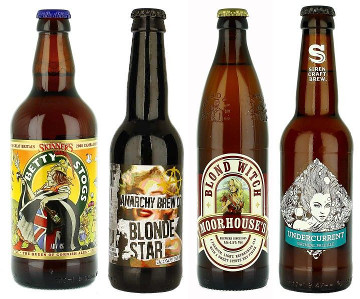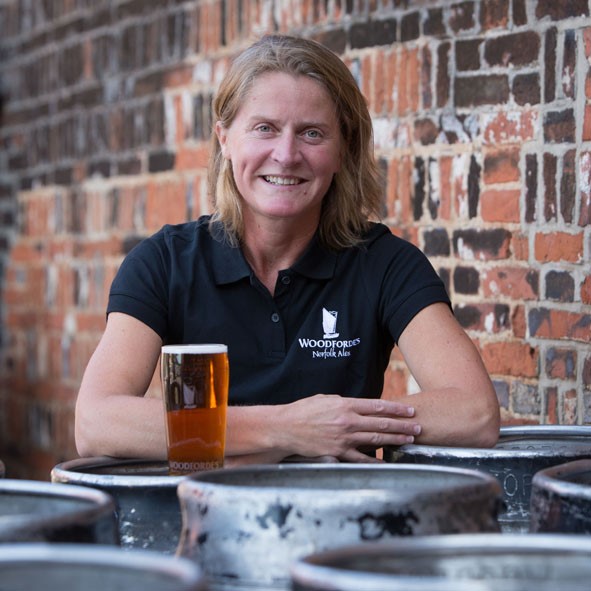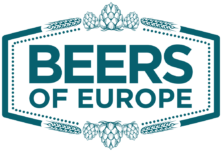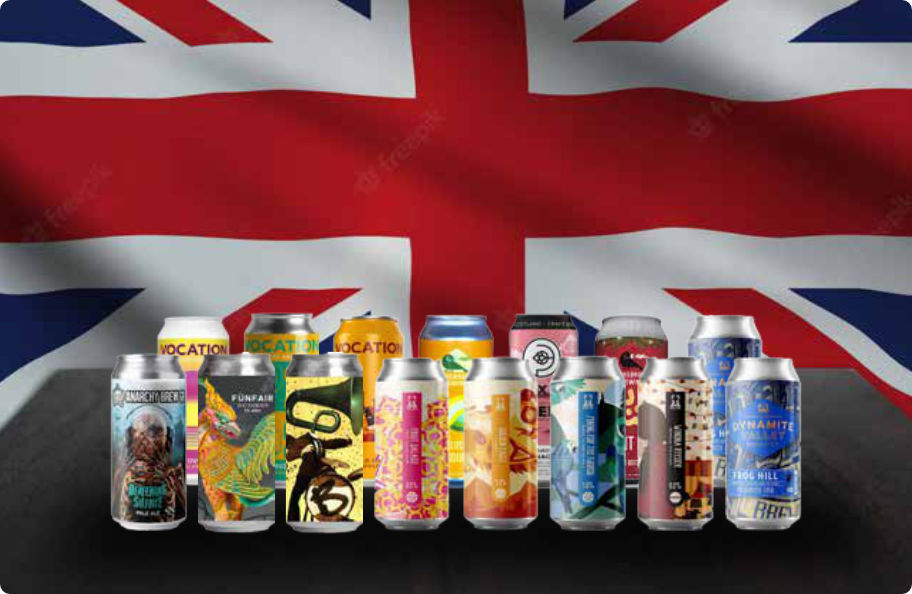Guides and Facts
History of Women in Brewing
Originally Posted on Mar 04, 2016
International Women’s Day 8th of March
It is clear to see the divide that brewing creates between males and females, due to the stigma that surrounds the topic. Whilst this division between the sexes is portrayed throughout the process from labels to advertising, many would be surprised to learn that female brewers are so engrained in history, they even have their own term ‘Brewsters’.

Just some of the bottle labels showing how females are represented in brewing culture.
History of Women in Brewing
‘Brewsters’ is a term that has been attributed to female brewers since Medieval times, but the notion of the female brewer goes back as far, if not further, than males. The technique was first used in ancient Egypt, as a means to barter for goods, as well as offerings to Tjenenet, the ancient Egyptian goddess of beer but also childbirth, which shows a relationship between beer and women that stems from its very beginning. Ancient Greeks and Sumerians also shared the ideology of females brewing with the latter, having their own term, Ninkasi which translates as ‘the lady who fills the mouth’. As well as this, it was the Goddess Siries that was said to be in charge of the Brewing Ritual itself and only women were in allowed to brew, using ingredients as obscure as crab claws, which you will probably find in a Brewdog recipe coming soon. Moving on, British brewing became popular in the 13th Century with the introduction of hops, which were added to the mash to create the traditional British ale style. Many housewives took to brewing as a way of increasing the household income and it was of course, was a safer alternative to water which at the time contained many diseases.
Decline of a Female Dominated Industry
The Black Plague began to change the tide of brewing from females to a male sector of industry. The plague left more demand for workers, which led to a pay rise. This in turn meant more people were spending their money on beer. Taverns opened, owned by the husband, whilst the brewer was the wife, who was in charge of producing decent quality beer and was punished if it was not up to scratch. As it got more commercial, it became dominated by males owning the buildings it was sold in, and had the resources at their disposal to succeed, whereas women had the skills, but not the same opportunities. By the end of the 17th Century, all beer was hopped and many of the varieties and styles women had been brewing for centuries were being pushed out by new techniques that focused on creating and selling as cheap as possible to bring more people to their establishments. The addition of Duty onto the production of hops was also a negative impact on the Brewsters, who were no match for a rapidly expanding market where competition to make money was rife. And thus ended an era stretching thousands of years where women were pioneers of beer from the Gods they followed to the workers who paid for their goods and the world entered an age of another male dominated past time.
Viva La Revolution-ette?
Whilst you can compile a persuasive argument to say that brewing is still run predominantly by males, there are women in the field that are figureheads for brewing and here at Beers of Europe, we salute you. One figurehead, Sara Barton, began her career with a Masters Degree in Brewing from the Heriot Watt University in Edinburgh. This eventually led her to start up her own brewery, aptly named Brewsters, in September 1997. The brewery itself carries a core range of six different brews and an extensive range of seasonal varieties too. She received the Brewer of the Year in 2013 which is a prestigious award presented by the British Guild of Beer Writers. She joins a growing group of women who are held in high regards by their field. Another modern day Brewster is Claire Monk, who is the Head Brewer at Welbeck Abbey. Welbeck Abbey Brewery produces 15,000-18,000 pints a week using completely natural ingredients to ensure a purity and pride in the beer that is distributed to around 300 independent pubs in the local area and is a credit to the long history of the Welbeck Abbey site that the Brewery is situated on.

Image above is Belinda Jennings Head Brewer at Woodforde’s. Just one of many women transforming the beer industry.
Aside from Brewsters, you can also find women in other aspects of the industry. For instance, Emma Gilleland has had a long career in brewing, moving from being the first female head brewer in England, to working at Marstons as Director of Supply Chain, which means she in responsible for everything from brewing to quality and distribution and she has been called the most influential woman in brewing. This is hardly surprising, considering she oversees 60 different brews from 5 different Marstons breweries. Behind the scenes, beer writers Jane Peyton who is the author of ‘Beer O’Clock: Craft, Cask and Culture’ and Melissa Cole, author of ‘Let Me Tell You About Beer’ help to introduce women into the subject and also help to display women’s influence with their knowledge on the topic. Melissa writes that an increase of women getting back into brewing is thanks to consumers thinking more carefully about what they are drinking and identifying certain aspects of their beers as more important, such as how fresh or local a beer is. This compliments many ideals of the brewsters, who take time to carefully create the beer as a pairing to something on the palate. In addition to this, the 79% rise in craft brewing gives women an opportunity to showcase their talent, as it becomes a more sought after alternative to commercially available beers.
Eradicating a Common Misconception
The Campaign for Real Ale or CAMRA, has registered a 20% increase in females trying real ale and now women make up 22% of their memberships. Some women are still under an illusion that beer tastes disgusting and it contains too many calories to be considered healthy. But the truth behind it is that beer can have less calories than skimmed milk and there are several healthy benefits from the vitamins it provides to the diseases it helps to prevent. There is also a huge variety of brews to appeal to different tastes that include fruit beers and chocolate beers. Sara Barton fronts a new scheme to illuminate women’s brewing called Project Venus. In the project, several brewsters are brought together to inspire and teach others and they have even released their own beers.
The future of women in brewing is bright, and some campaign to get brewing as an option for young women as a way of teaching them about respecting alcohol and giving them a pathway into brewing, an industry they dominated for thousands of years, and may just be coming back into the limelight, to dominate once again.
We can supply references if requested.
Article by Matthew Keeley-Smith




